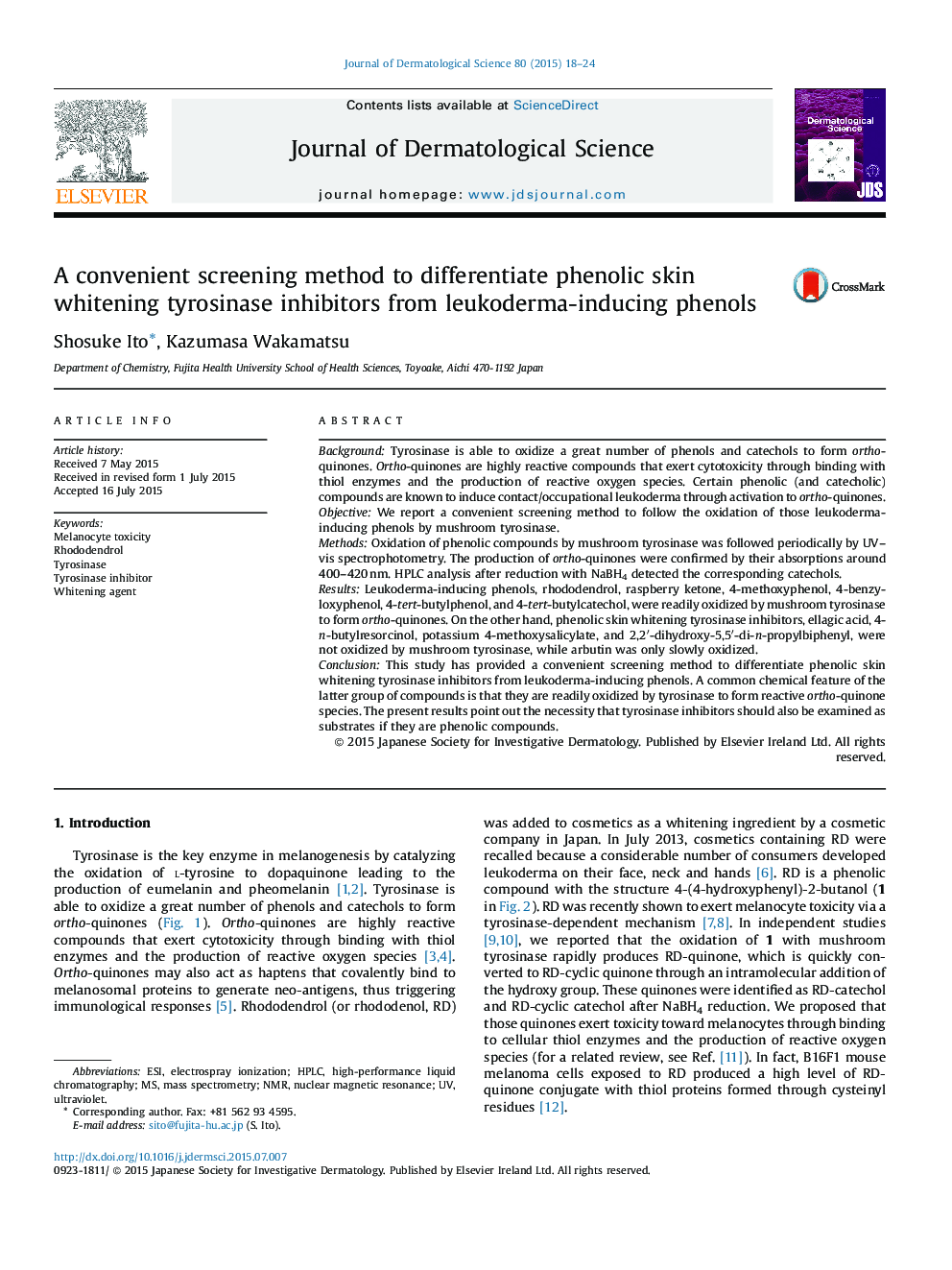| کد مقاله | کد نشریه | سال انتشار | مقاله انگلیسی | نسخه تمام متن |
|---|---|---|---|---|
| 6074185 | 1203185 | 2015 | 7 صفحه PDF | دانلود رایگان |
- Oxidation of phenols to ortho-quinones is followed by spectrophotometry and HPLC.
- Leukoderma-inducing phenols are oxidized by mushroom tyrosinase to toxic ortho-quinones.
- Phenolic tyrosinase inhibitors are not (or only slowly) oxidized by tyrosinase.
- Tyrosinase inhibitors should be examined as substrates if they are phenolic compounds.
BackgroundTyrosinase is able to oxidize a great number of phenols and catechols to form ortho-quinones. Ortho-quinones are highly reactive compounds that exert cytotoxicity through binding with thiol enzymes and the production of reactive oxygen species. Certain phenolic (and catecholic) compounds are known to induce contact/occupational leukoderma through activation to ortho-quinones.ObjectiveWe report a convenient screening method to follow the oxidation of those leukoderma-inducing phenols by mushroom tyrosinase.MethodsOxidation of phenolic compounds by mushroom tyrosinase was followed periodically by UV-vis spectrophotometry. The production of ortho-quinones were confirmed by their absorptions around 400-420Â nm. HPLC analysis after reduction with NaBH4 detected the corresponding catechols.ResultsLeukoderma-inducing phenols, rhododendrol, raspberry ketone, 4-methoxyphenol, 4-benzyloxyphenol, 4-tert-butylphenol, and 4-tert-butylcatechol, were readily oxidized by mushroom tyrosinase to form ortho-quinones. On the other hand, phenolic skin whitening tyrosinase inhibitors, ellagic acid, 4-n-butylresorcinol, potassium 4-methoxysalicylate, and 2,2â²-dihydroxy-5,5â²-di-n-propylbiphenyl, were not oxidized by mushroom tyrosinase, while arbutin was only slowly oxidized.ConclusionThis study has provided a convenient screening method to differentiate phenolic skin whitening tyrosinase inhibitors from leukoderma-inducing phenols. A common chemical feature of the latter group of compounds is that they are readily oxidized by tyrosinase to form reactive ortho-quinone species. The present results point out the necessity that tyrosinase inhibitors should also be examined as substrates if they are phenolic compounds.
Journal: Journal of Dermatological Science - Volume 80, Issue 1, October 2015, Pages 18-24
